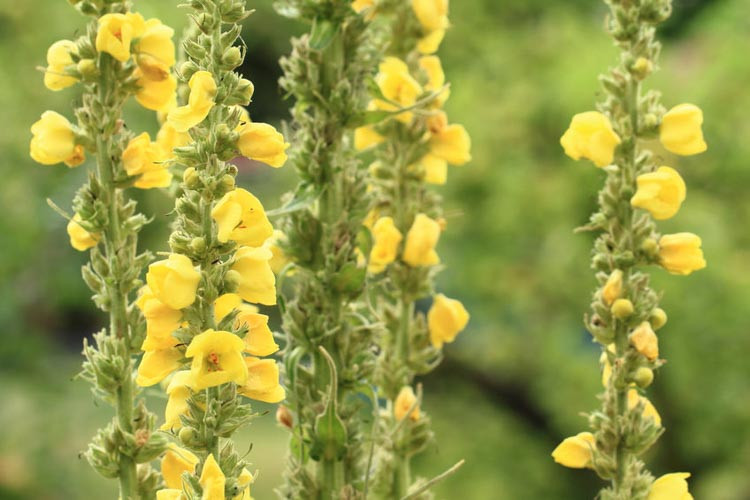Verbascum (Mullein)
Verbascum, commonly known as mullein, is a biennial or perennial plant recognized for its rosette of basal leaves in the first year and tall, upright flowering spikes in the second year. These spikes can be quite architectural, adding vertical interest to gardens. With more than 250 species, mulleins can vary in appearance, but they typically have a woolly texture on their leaves and stems due to a layer of fine hair.
Hardiness: Hailing from Europe and Asia, mullein plants are well-adapted to a wide range of conditions. They are hardy in USDA zones 3 through 10, tolerating both cold winters and summer heat. One of its standout qualities is its tolerance for poor, dry, sandy, or rocky soils, making it an excellent choice for challenging gardening locations.
Flowers and Bloom Time: The beauty of verbascum lies in its tall, slender spikes adorned with a profusion of flowers that can be yellow, white, pink, or purple, depending on the species. Most varieties bloom from late spring to late summer. The blooms, which can last several weeks, often feature a delicate, contrasting color in their centers.
Uses: Mullein’s tall flowering spikes make it an ideal choice for the back of a border, providing height and drama. Additionally, its drought-tolerant nature means it’s a suitable plant for xeriscaping or rock gardens. In traditional medicine, especially in herbal remedies, parts of the plant, particularly the leaves, have been used to address respiratory issues.
Benefits: Apart from its ornamental and medicinal values, mullein offers ecological benefits as well. Its flowers are a magnet for a variety of pollinators, including bees and butterflies, enhancing biodiversity in the garden. Furthermore, due to its deep roots, mullein can aid in soil stabilization, especially in sandy or rocky terrains.

